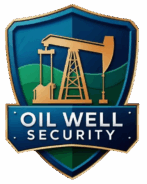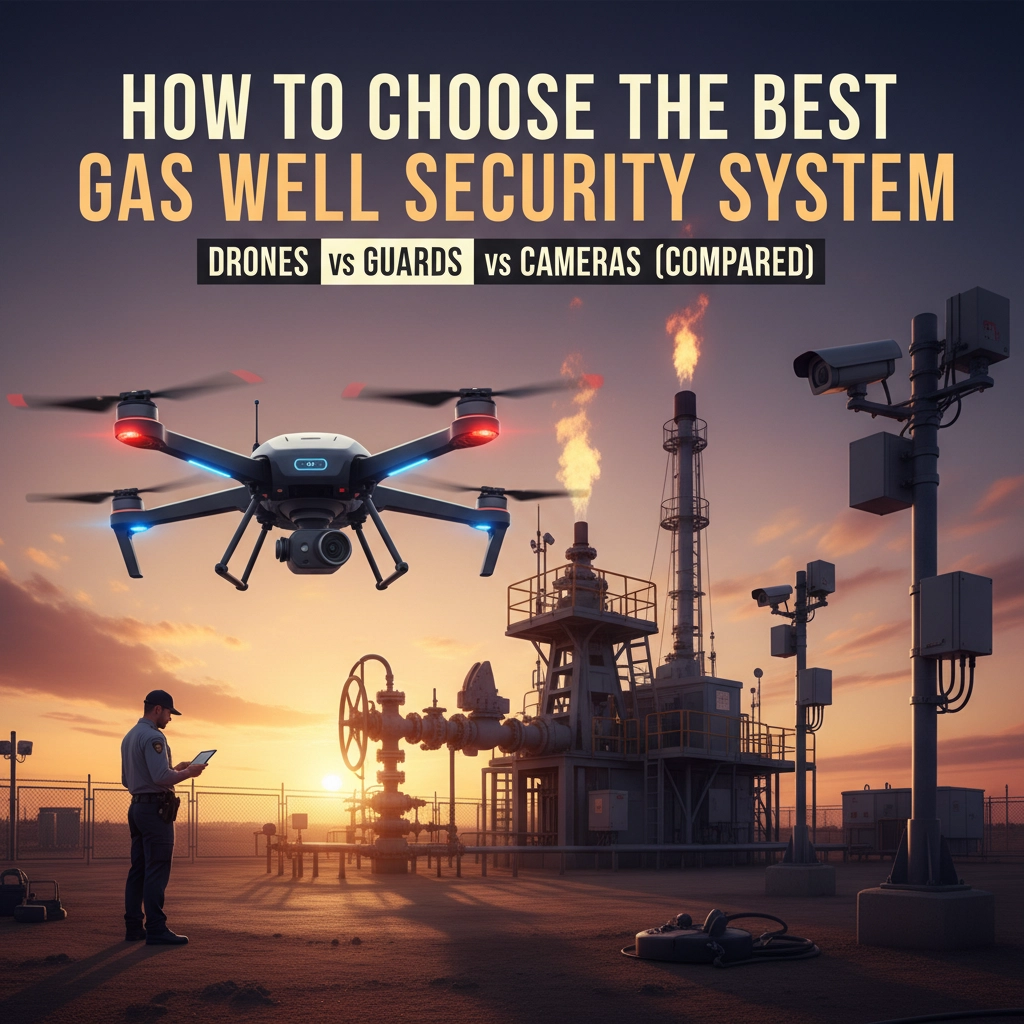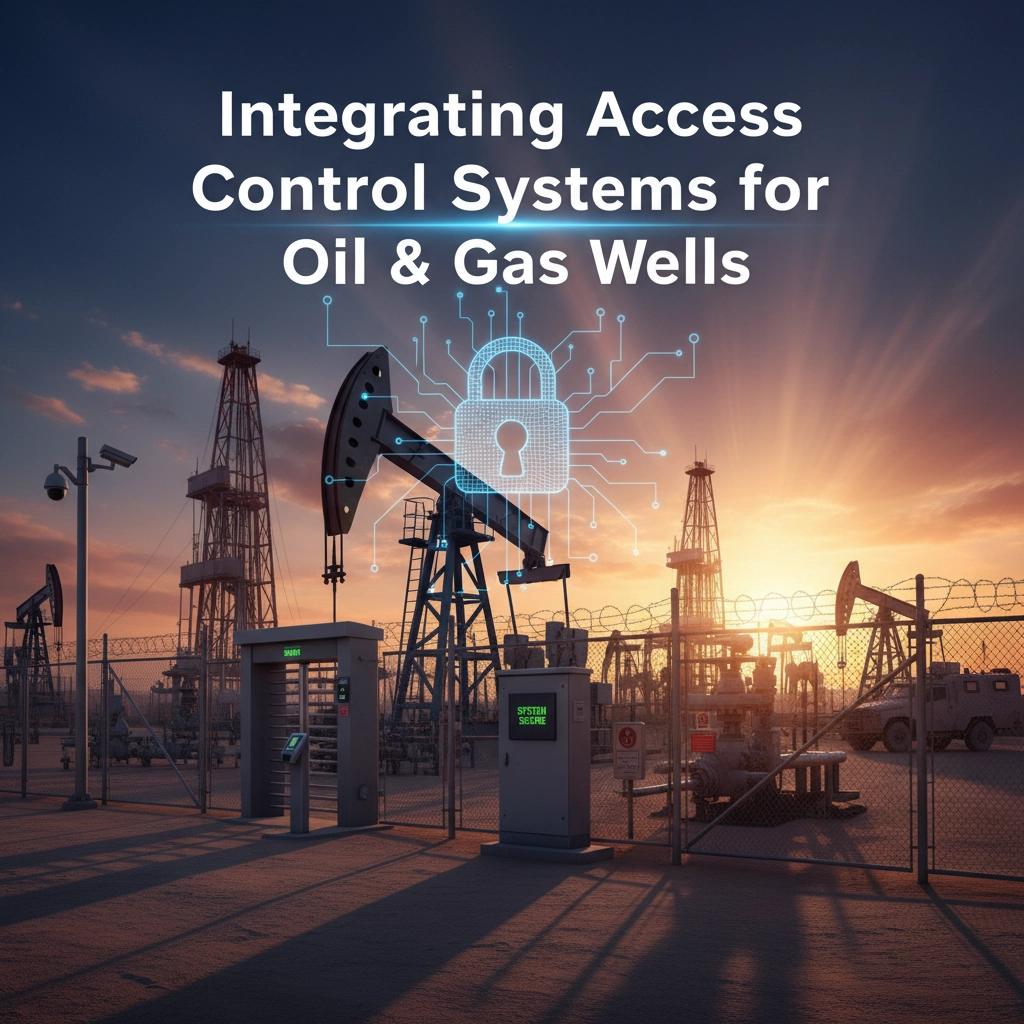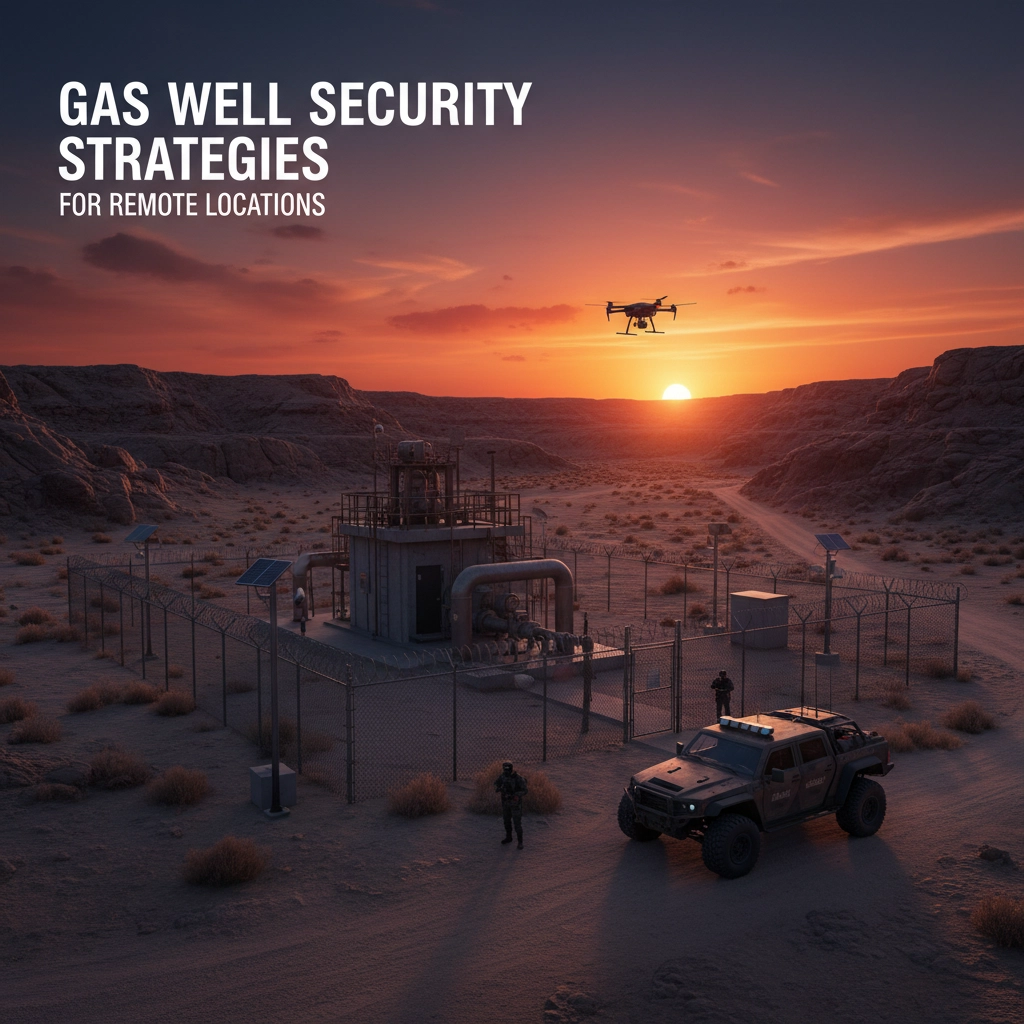Choosing the right security system for your gas well operation isn't just about protection: it's about maximizing your return on investment while ensuring comprehensive coverage of your critical infrastructure. You're facing a decision that will impact your operational costs, security effectiveness, and peace of mind for years to come.
The security landscape has evolved dramatically, offering you three primary approaches: autonomous drone surveillance, traditional security guards, and fixed camera systems. Each brings distinct advantages and limitations that directly affect your bottom line and operational security. Understanding these differences is crucial for making an informed decision that aligns with your specific needs and budget constraints.
Drone Surveillance: Your Eye in the Sky
Drones revolutionize how you monitor vast gas well operations by addressing the fundamental challenge every operator faces: scale. When you're managing hundreds of miles of pipeline or multiple remote wellheads, traditional patrol methods simply can't provide the coverage you need.
Modern drone systems equipped with thermal imaging and high-resolution cameras give you the ability to detect anomalies, unauthorized access, and potential threats across your entire operation in real-time. You can monitor areas that would be dangerous or impossible for human personnel to reach regularly, including locations with toxic gases or challenging terrain.

The cost-effectiveness becomes immediately apparent when you calculate the expense of patrolling remote locations with vehicles and personnel. Drones eliminate the need for constant travel to distant wellheads while providing superior surveillance capabilities through thermal imaging that can detect temperature variations indicating potential leaks or equipment malfunctions.
However, you must consider the limitations. Weather dependency means your drone operations may be grounded during storms or extreme conditions when security threats might actually increase. Battery life restricts continuous surveillance, requiring you to schedule patrol flights strategically rather than maintaining constant coverage.
Your return on investment with drone technology typically materializes quickly through reduced personnel costs and improved incident detection rates. The scalability factor is particularly compelling: adding coverage to new locations doesn't require hiring additional staff, just programming new flight routes.
Security Guards: The Human Element
Security guards provide something technology cannot: human judgment and immediate physical response capability. When you need someone who can assess complex situations, interact with personnel, or provide customer service alongside security functions, guards offer irreplaceable value.
The physical presence of security personnel creates a powerful deterrent effect that cameras and drones cannot match. Potential intruders know they're facing immediate human response rather than just surveillance equipment. Guards can make split-second decisions about situations that require nuanced evaluation and can physically intervene when necessary.
However, the economics are challenging. Full 24/7 coverage requires three shifts, typically costing $30,000 or more per month per location. This expense quickly becomes prohibitive when you're protecting multiple sites or extensive pipeline networks.

Beyond cost considerations, you're dealing with inherent human limitations. Guards experience fatigue, require breaks, and may call in sick during crucial times: especially during severe weather when security risks often peak. Coverage gaps during shift changes create vulnerabilities in your security posture.
The documentation challenge is significant too. When incidents occur, you're relying on verbal reports without visual evidence, which can complicate insurance claims or legal proceedings. Coordination between multiple guards across large facilities often proves difficult, potentially delaying response times when every second counts.
Fixed Camera Systems: Your Always-On Sentinels
Video surveillance represents the most cost-effective solution for continuous 24/7 monitoring of your gas well operations. Modern systems provide capabilities that surpass human observation through night vision, thermal imaging, and pan-tilt-zoom functionality that allows remote operators to track suspicious activity and focus on potential threats.
The consistency factor alone makes cameras compelling. Unlike human operators, your camera system performs identically every minute of every day without fatigue, distractions, or weather-related call-offs. You're getting reliable surveillance that never takes breaks or experiences performance variations.
Cost efficiency is remarkable: comprehensive camera surveillance typically runs $2,000 to $4,000 monthly compared to $30,000+ for equivalent guard coverage. The return on investment becomes evident within the first few months of operation.
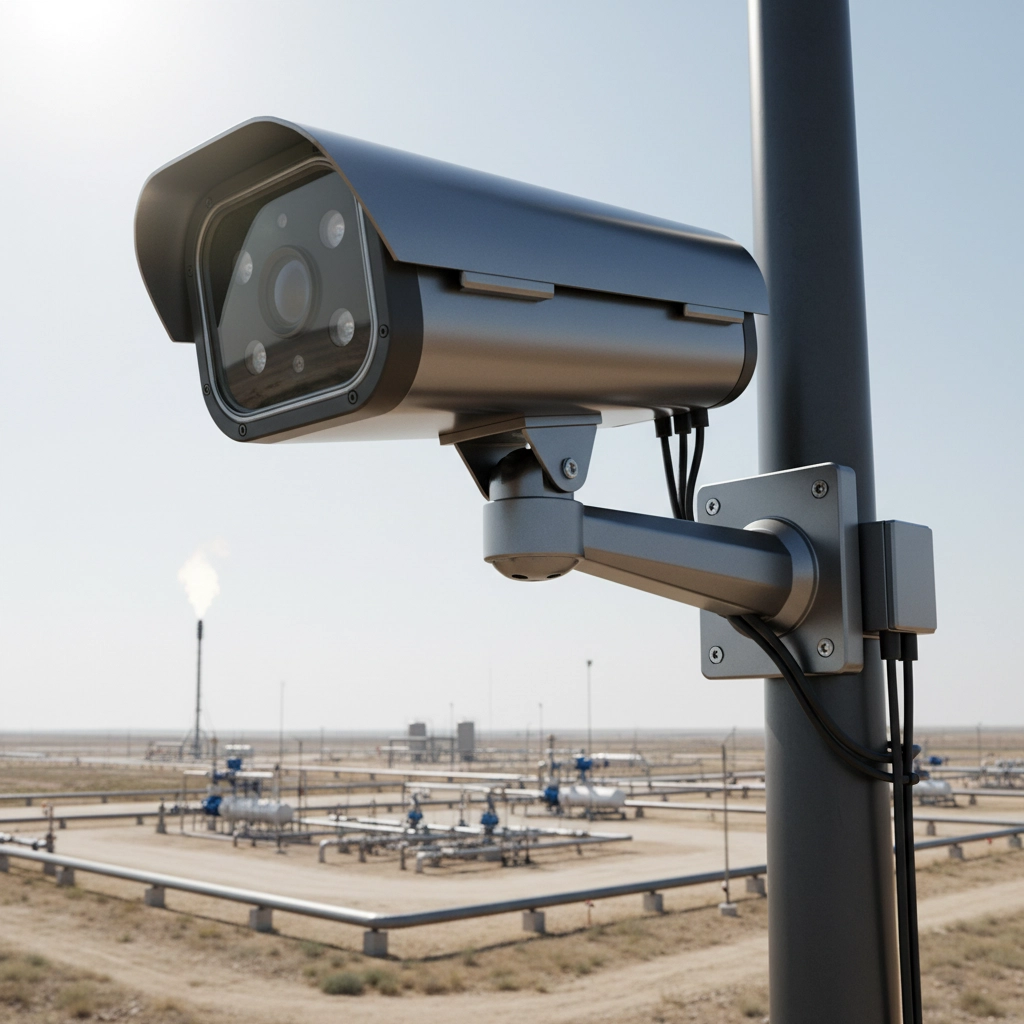
Advanced features like cellular backup ensure your monitoring continues even if primary internet connections fail. When incidents occur, you have both written reports and video evidence for insurance claims, legal proceedings, or operational analysis.
The limitation lies in coverage areas. Stationary cameras create blind spots between monitored zones, and installation in remote pipeline areas can be expensive. However, strategic placement combined with PTZ capabilities minimizes these coverage gaps significantly.
Your camera system also requires personnel for incident response: the cameras identify and document threats but cannot physically intervene. This limitation is often addressed by combining camera surveillance with rapid response protocols or on-call security services.
Making Your Decision: Scenario-Based Recommendations
Choose drones when you're managing extensive pipeline networks spanning hundreds of miles or operating in extremely remote locations where other security methods are impractical. Drone surveillance excels for operators needing to monitor vast territories cost-effectively while reaching areas too dangerous for regular human patrol.
Select security guards when your operation requires immediate physical response capability, customer interaction, or complex decision-making during security incidents. High-value facilities facing specific threats often justify the expense of human security presence combined with technological surveillance.
Implement camera systems when you need cost-effective 24/7 monitoring with consistent performance and comprehensive documentation. Most gas well operations benefit from fixed cameras as their primary security backbone due to the superior cost-to-coverage ratio.
Deploy hybrid approaches when your security needs are complex and budget allows for comprehensive protection. Combine fixed cameras for continuous perimeter monitoring, scheduled drone patrols for pipeline surveillance, and on-call security response for incidents requiring human intervention.

The most effective security strategies acknowledge that each technology addresses different aspects of protection. You don't have to choose just one approach: successful operators often implement layered security combining multiple technologies based on specific site requirements and risk assessments.
Cost Analysis That Impacts Your Bottom Line
Understanding the true cost of each approach requires looking beyond initial expenses to ongoing operational costs and return on investment through prevented incidents.
Drone programs involve equipment purchase or leasing, operator training, maintenance, and flight scheduling. While initial costs are higher than cameras, ongoing expenses are typically lower than guard services while providing superior coverage of remote areas.
Guard services appear straightforward but hidden costs include training, insurance, overtime during emergencies, and coordination challenges across multiple sites. The expense multiplies rapidly when protecting numerous locations simultaneously.
Camera systems require upfront installation investment but ongoing costs are primarily monitoring services and maintenance. The cost per monitored location decreases significantly as you scale up coverage across multiple sites.
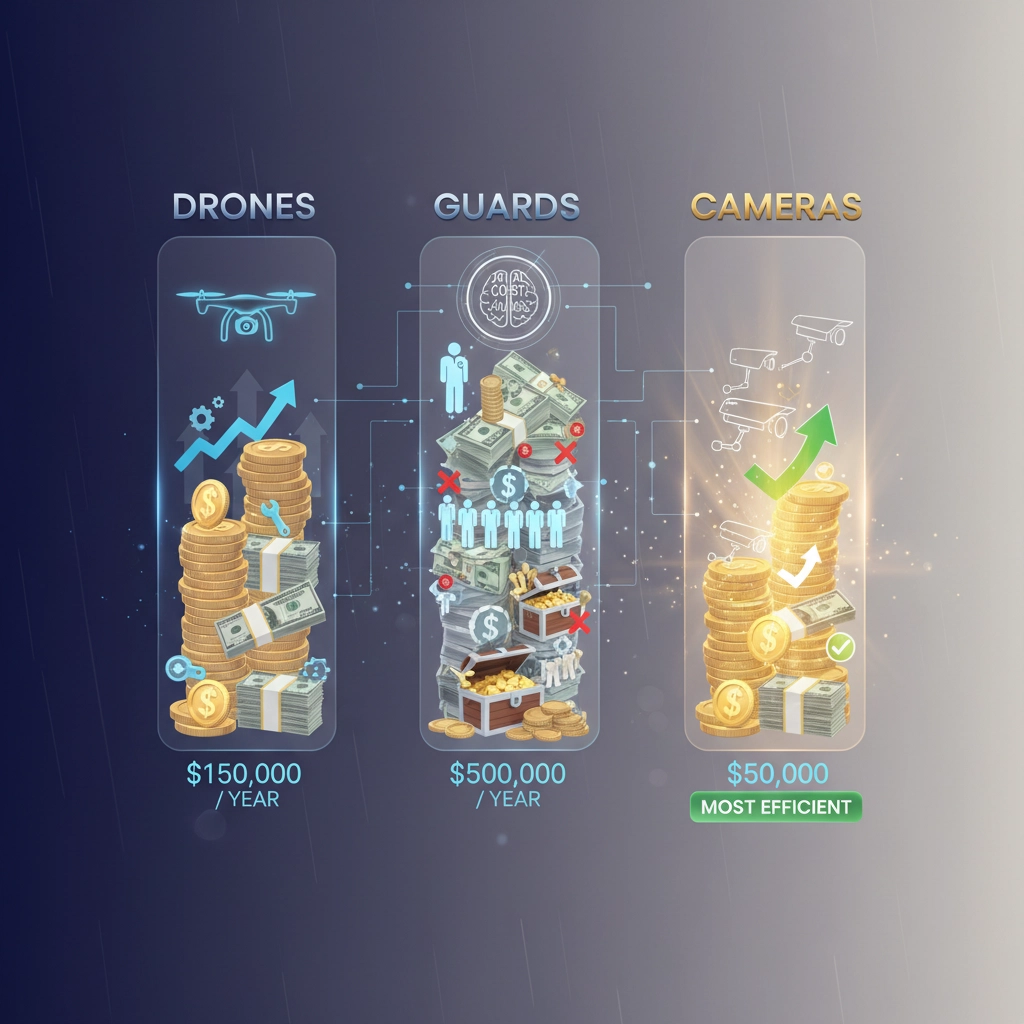
Your decision should factor in prevented loss calculations. A single prevented theft, vandalism incident, or operational disruption often justifies months of security system costs. The question becomes which approach provides the best prevention-to-cost ratio for your specific operational profile.
Implementation Strategy for Maximum Effectiveness
Start by conducting a comprehensive security assessment of your facilities. Identify high-risk areas, access points, and vulnerable infrastructure that require priority protection. This assessment guides your technology selection and deployment strategy.
Phase your implementation to prove effectiveness and manage costs. Begin with your highest-risk locations using the most appropriate technology, then expand coverage based on demonstrated results and available budget.
Train your personnel on new security systems and establish clear protocols for incident response. The most sophisticated security technology is only as effective as your team's ability to respond appropriately to alerts and identified threats.
Regular evaluation ensures your security approach continues meeting operational needs as your facilities expand or threat profiles change. What works today may require adjustment as your business grows or security challenges evolve.
Your Next Steps Toward Enhanced Security
The choice between drones, guards, and cameras isn't just about security: it's about optimizing your operational efficiency while protecting your valuable energy infrastructure. Each option offers distinct advantages that align with different operational requirements and budget constraints.
Your security investment pays dividends through prevented incidents, reduced insurance costs, and improved operational confidence. The key is selecting the approach that provides maximum protection value for your specific situation rather than adopting a one-size-fits-all solution.
Ready to develop a customized security strategy for your gas well operations? Our team at Oil Well Security specializes in designing comprehensive protection solutions tailored to your specific needs and budget requirements. Contact us at info@oilwellsecurity.com or call (970) 465-2525 to discuss how we can enhance your facility security while optimizing your operational costs.
